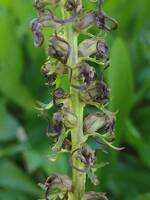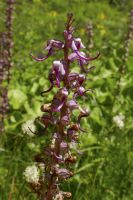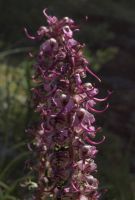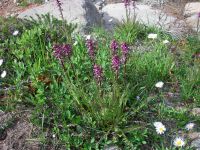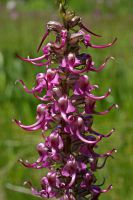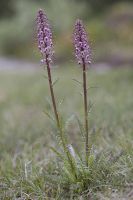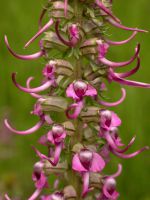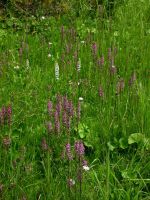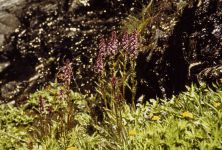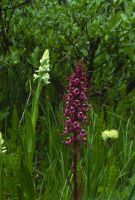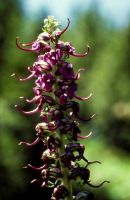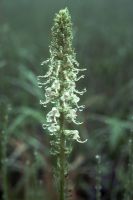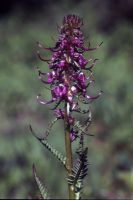Distribution: Occurring on both sides of the Cascades crest and in the Olympic Mountains in Washington; Alaska to California, east to the Rocky Mountains.
Habitat: Seeps, lake shores, wet meadows, and other wet areas from middle elevations to the subalpine.
Flowers: June-August
Origin: Native
Growth Duration: Perennial
Conservation Status: Not of concern
Pollination: Bumblebees, bees, butterflies, hummingbirds
Glabrous, fibrous-rooted perennial, the stems often clustered, 1.5-7 dm. tall.
Basal leaves 5-25 cm. long, the blade slightly longer than the petiole, pinnate, the leaflets narrow, sharply serrate; cauline leaves similar, alternate, gradually reduced upward.
Inflorescence a fairly dense, spike-like raceme, much elongate, the bracts shorter than the flowers, at least the lower cleft into narrow segments; calyx lobes 5, short, entire, sub-equal; corolla pink-purple to nearly red, 1-1.5 cm. long, bilabiate, the upper lip short and strongly hooded, tipped with an elongate, slender, upturned beak; lower lip 3-lobed, rather small; stigma capitate.
Capsule glabrous, flattened, curved.
The only other species in our area of a similar reddish color, P. ornithorhychus, has a short, head-like inflorescence, while P. groenlandica\\\'s inflorescence is always much elongate.
Publication: Fl. Scand. Prodr. (ed. 2) 145. 1795.
Pedicularis groenlandica Retz. var. surrecta (Benth.) A. Gray
PNW Herbaria: Specimen records of Pedicularis groenlandica in the Consortium of Pacific Northwest Herbaria database
WA Flora Checklist: Pedicularis groenlandica checklist entry
OregonFlora: Pedicularis groenlandica information
E-Flora BC: Pedicularis groenlandica atlas page
CalPhotos: Pedicularis groenlandica photos










